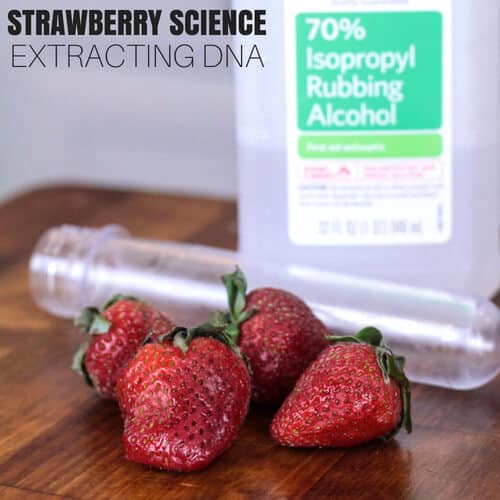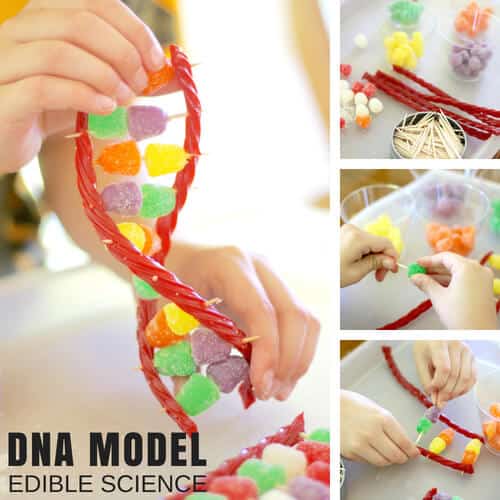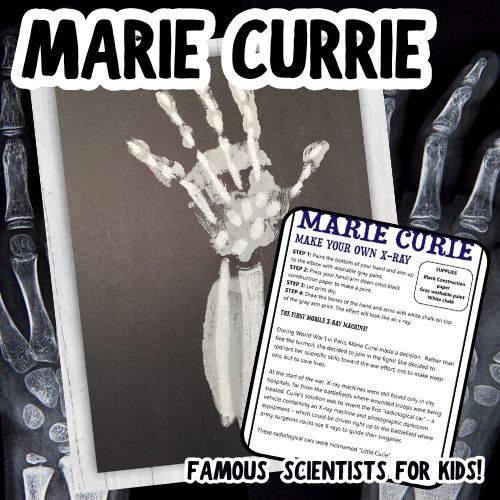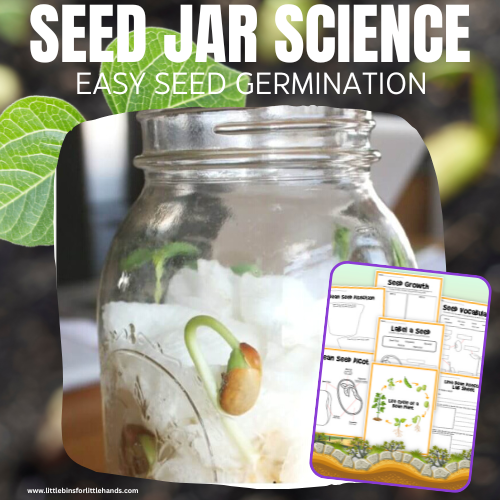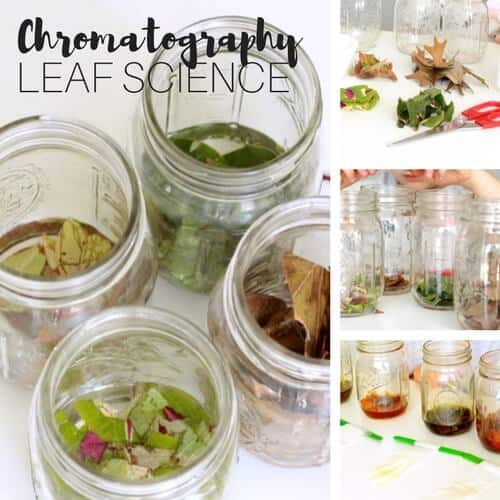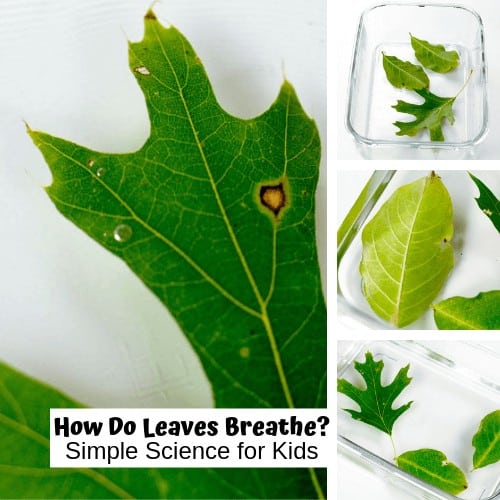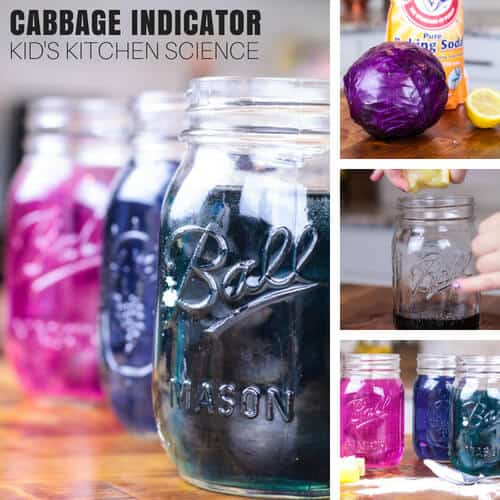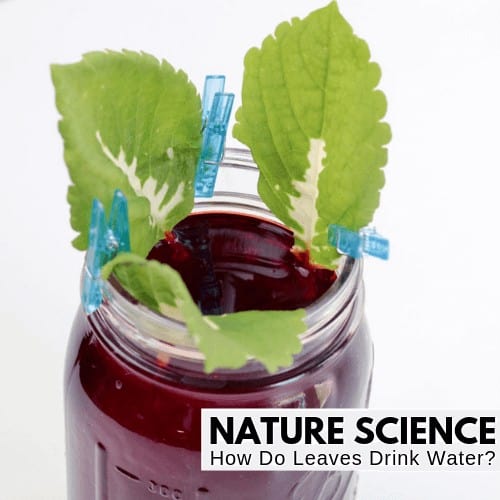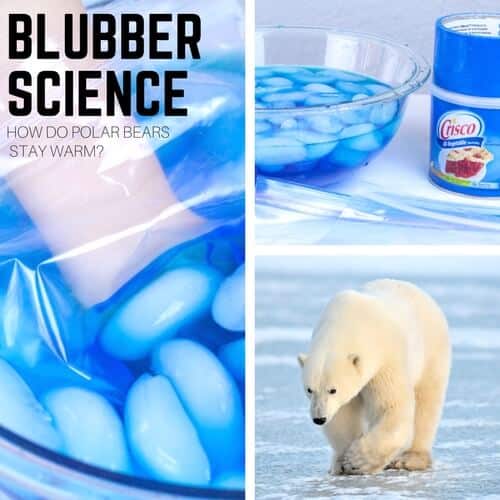Teaching kids about biology can be a great way to teach them about the world around them and understand the science of life. In this post, we’ll share some easy biology experiments and activities you can do with kids, whether you’re a parent or a teacher. From learning how to build DNA to exploring how plants grow, there are so many fun activities kids will love!
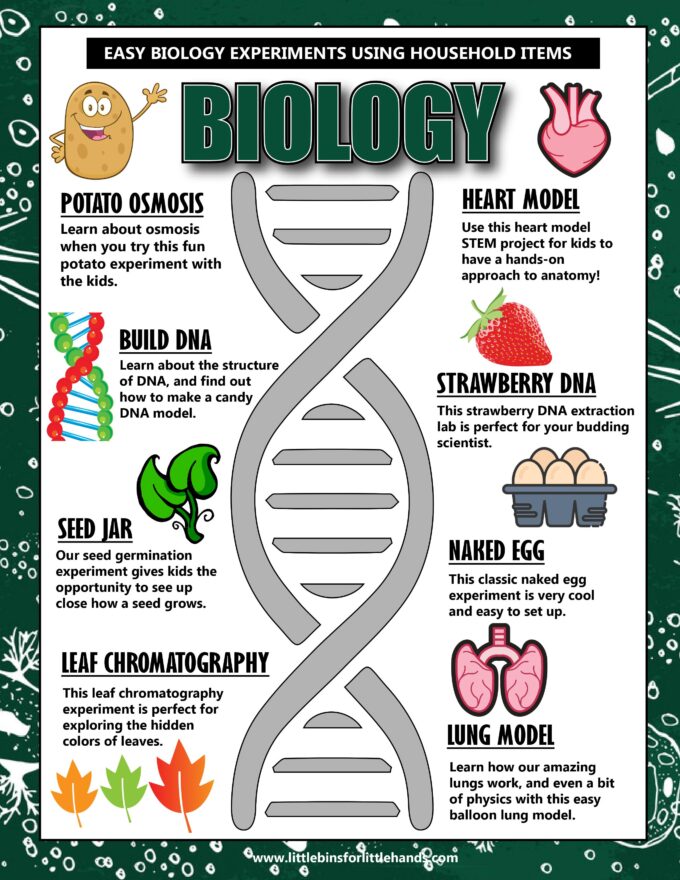
What is Biology?
Biology is the study of living things, and it helps us understand how all living creatures work.
It’s like a big puzzle where scientists, or biologists, try to figure out how plants, animals, and even tiny organisms function. They look at things like how our bodies work, how plants grow, how animals behave, and even how different creatures are related to each other.
Biology covers everything from the tiniest cells that make up our bodies to the vast diversity of life in the world, from the smallest bugs to the biggest whales. It’s like exploring a huge, amazing book about life on Earth.
Why is it important for kids to study biology?
- Understanding Life: Biology helps kids understand how all living things, including themselves, work. It’s like learning the owner’s manual for living beings.
- Respect for Nature: It teaches kids to appreciate and respect nature, from the tiniest insects to the biggest trees. This respect for the environment is crucial for a sustainable future.
- Healthy Living: Biology teaches about the human body and how to stay healthy. Kids learn about nutrition, exercise, and how to take care of their bodies.
- Curiosity and Discovery: It encourages curiosity and a love for exploring the world around them. Kids get to be little scientists, asking questions and finding answers.
- Environmental Awareness: Biology helps kids understand important topics like climate change, pollution, and conservation. This knowledge empowers them to make the world a better place.
Biology Topics
Plants: Kids can learn about different types of plants, their parts (roots, stems, leaves, flowers), and how they grow. They may also explore the importance of plants in providing food and oxygen for living beings.
Animals: Biology involves studying various animals and their characteristics. Kids can learn about the diversity of animals, their habitats, and how they adapt to survive in different environments.
Human Body: Basic concepts of the human body, such as organs, bones, muscles, and the five senses, can be introduced. Kids can learn how their bodies work and how to keep themselves healthy.
Life Cycles: Biology includes understanding life cycles of different organisms, like butterflies, frogs, and plants. Kids can observe and discuss the stages of growth and development.
Habitats and Ecosystems: Children can explore different habitats, such as forests, deserts, oceans, and learn about the plants and animals. They can also understand the interconnections between living things in an ecosystem.
Microscopic World: Kids can be introduced to the fascinating world of microscopic organisms, such as bacteria and protozoa. They may learn about their importance in nature and human health.
Genetics: In simple terms, genetics can be explained as the study of how traits are passed from parents to offspring. Kids can understand basic inheritance patterns and family resemblances.
Food Chains and Webs: Biology involves exploring food chains and food webs, showing how energy flows from one organism to another in an ecosystem.
Adaptations: Kids can learn how different animals have adaptations that help them survive in their environments, such as camouflage or unique body features.
Nature Observations: Encouraging kids to observe and explore the natural world around them is an integral part of biology. Nature walks, and outdoor activities foster a deeper appreciation for living organisms.
Free Biology Experiments Guide
Download and save this handy biology experiments guide and science process pack for your next science lesson!
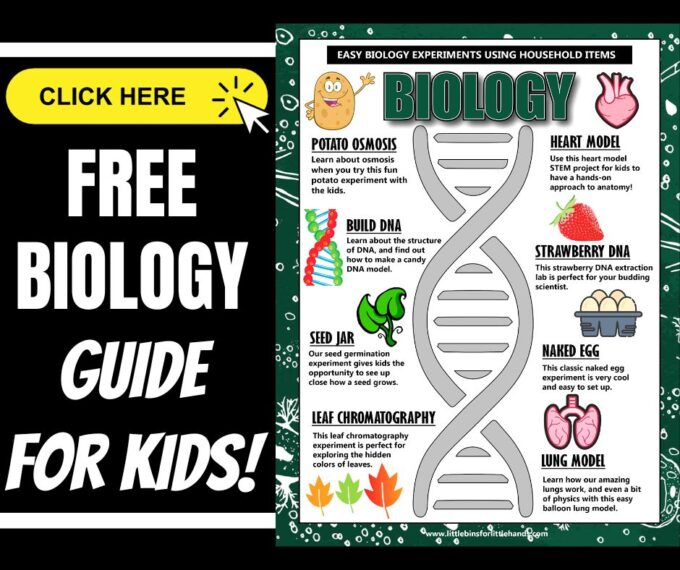
Fun Biology Questions to Ask
- What is photosynthesis, and how do plants use it?
- How do animals adapt to their environments?
- What’s the purpose of the heart in our bodies?
- How do bees help flowers and plants grow?
- Why do we have different seasons, and how does that affect nature?
- How do animals communicate with each other?
- What’s the role of DNA in living organisms?
- How do animals like chameleons change their colors?
- What are ecosystems, and why are they important?
- What are the 5 senses of the body? Think of fun examples for each one!
Quick Toddler or Preschooler Biology
- Start with easy ideas like recognizing common animals, plants, or body parts using pictures and simple books.
- Plan activities like planting seeds or observing bugs. Kids learn biology through play and exploration.
- Explain things in everyday language. For example, say, “Plants use sunlight for their food” instead of using complex words.
- Encourage thinking by asking questions like, “Why do leaves change color in the fall?” It helps kids explore and wonder.
- Go on nature walks to see plants and animals. Talk about what you see and how they act.
- Share nature stories. Kids remember better when learning is part of a story.
- Talk about the 5 senses or do an All About Me activity!
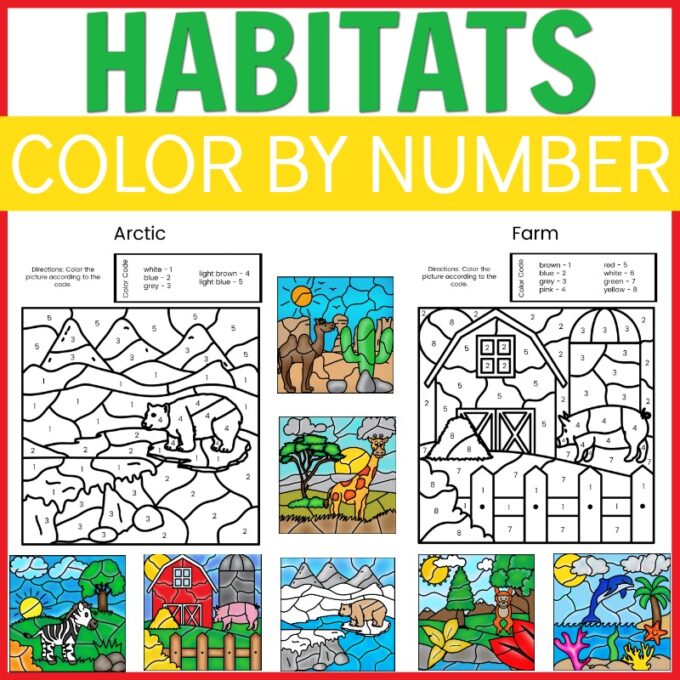



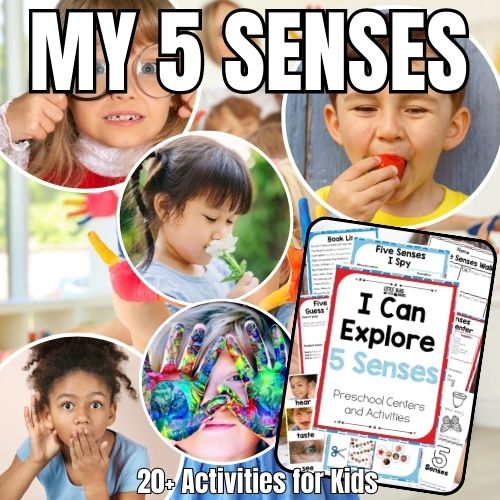
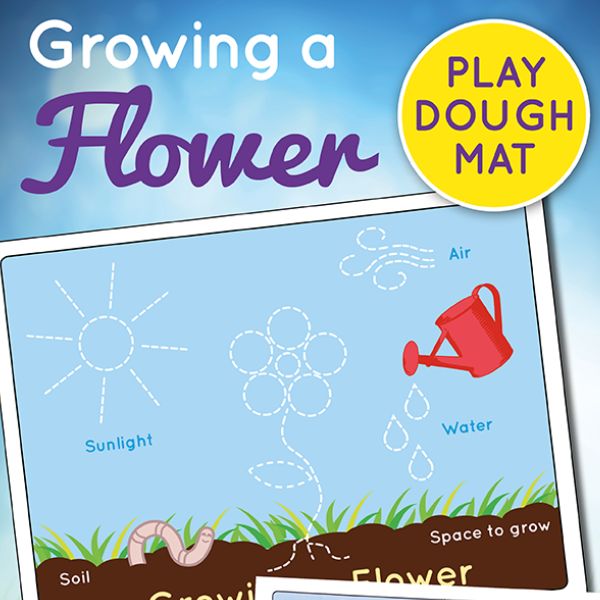
Biology Life Cycle Activities
New for the Holidays: Reindeer Facts and Life Cycle for Kids
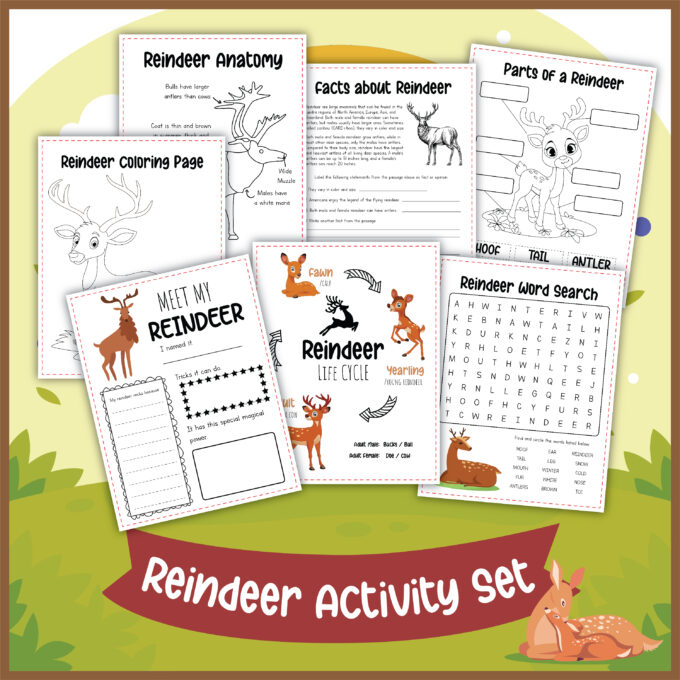
- Life Cycle Bug Play Dough Mats
- Ladybug Life Cycle
- Frog Life Cycle
- Butterfly Life Cycle
- Penguin Life Cycle
- Bean Sprout Life Cycle
- Plant Life Cycle
- Bee Life Cycle
- Earthworm Life Cycle
- Pine Tree Life Cycle
- Reindeer Life Cycle and Facts
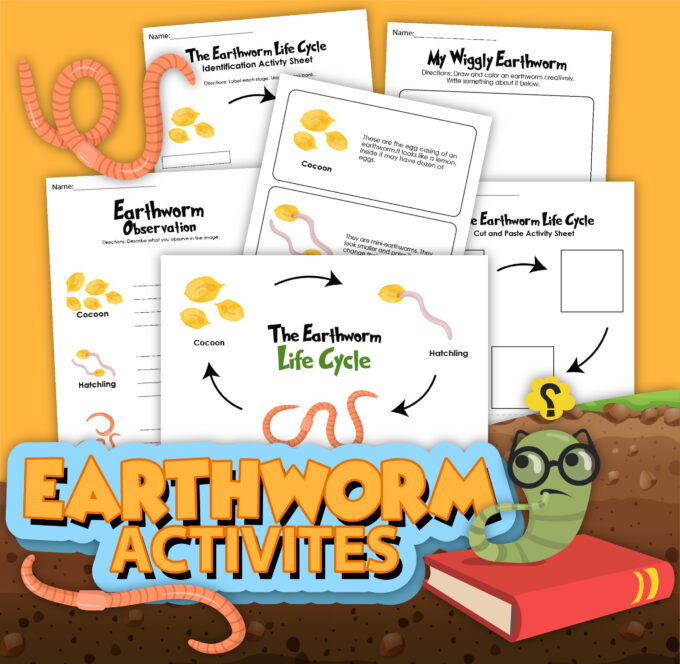
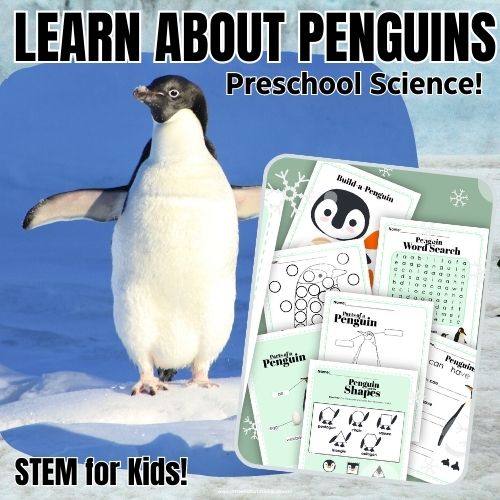
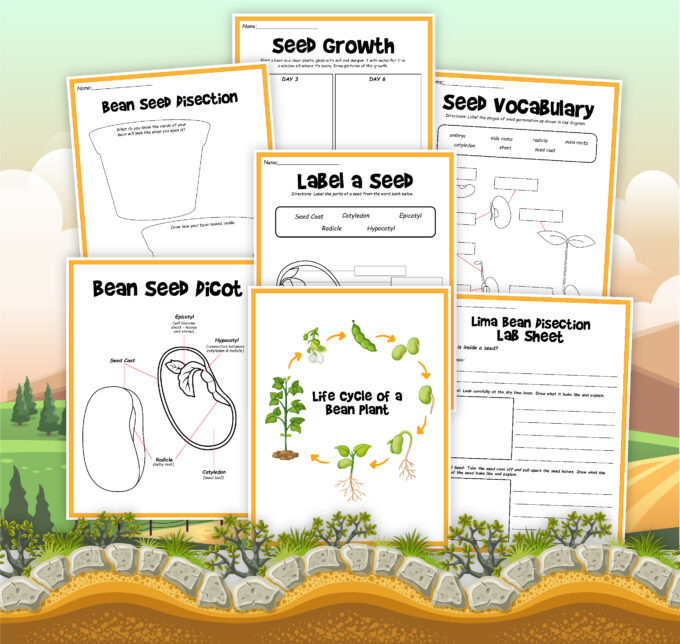
Biology Experiments To Explore
Explore Osmosis
Kids can discover how water moves in and out of plant cells in this Potato Osmosis Lab. You can also demonstrate this with growing gummy bears!
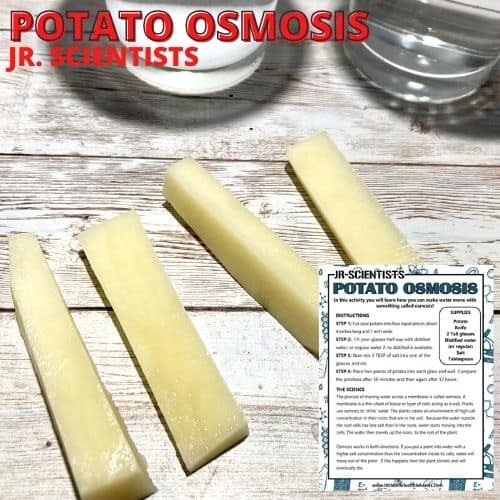
Make A Heart Model
Create an engaging and educational Heart Model STEM Project with your kids using household items like plastic bottles, bendy straws, and clay.

Extract DNA From Strawberries
Learn how to extract DNA from strawberries in this fun and educational science experiment that uncovers the secrets of DNA and genetics.
Build A Candy DNA Model
Explore how to build a Candy DNA model with this fun and educational edible science activity, perfect for teaching kids about the structure of DNA using candy-like licorice and marshmallows. Make sure to also grab this DNA coloring sheet.
Make A Lung Model
Kids can learn how to make a lung model, which involves creating a simple lung model using a plastic bottle, balloons, and a straw to demonstrate how lungs function when we breathe.
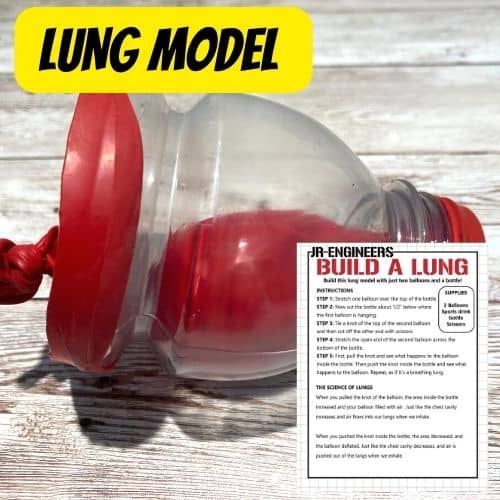
X-Ray Project
Explore the principles of X-rays inspired by scientist Marie Curie’s groundbreaking work, and make your own X-rays with this hands-on STEAM project.
Create A Seed Jar
Explore the fascinating world of seed germination, watch roots grow, and identify the parts of a plant with this Seed Germination Experiment.
Build A Mini Greenhouse
Enjoy growing plants with a mini greenhouse made from plastic bottles. Watch the life cycle of a plant unfold with simple materials from your recycling bin.
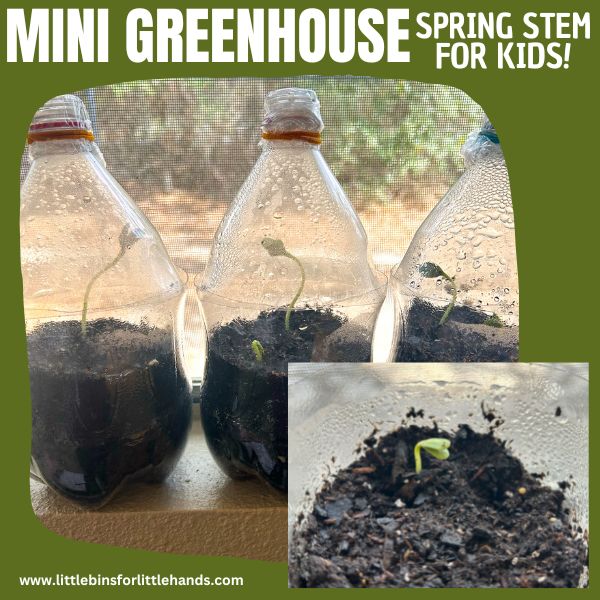
Explore Leaf Chromatography
Discover the science of leaf chromatography with this STEM activity that teaches kids about the pigments in leaves and how they change colors during the fall season.
Make Spinach Glow
Transform ordinary spinach that you eat into a glowing green mixture under ultraviolet light! Learn about the pigments present in plants, particularly chlorophyll and how certain pigments can absorb light at one wavelength and emit light at another, resulting in the observed glow.

Dissect A Flower
Learn about the parts of a flower and what they do with a fun printable parts of a flower diagram! Then gather your own flowers, and do a simple flower dissection to identify and name the parts of a flower.
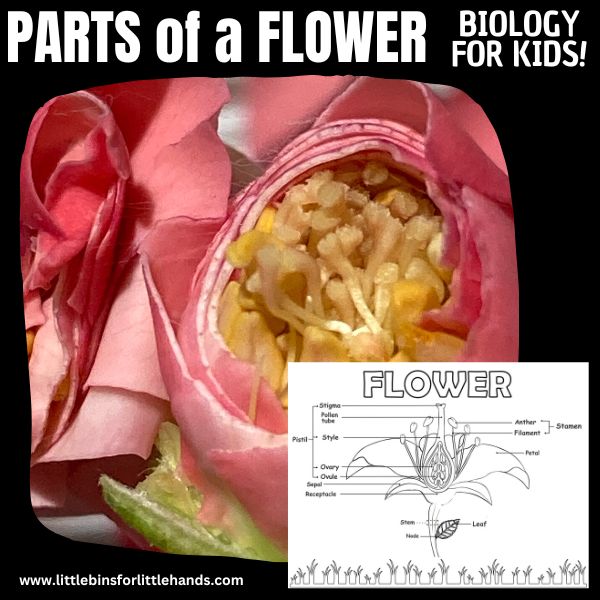
Color Celery
Set up a celery experiment with food coloring that shows how water travels through a plant.
Explore How Plants Breathe
Learn about plant respiration with a few leaves you can grab from your backyard.
Make Red Cabbage Indicator
Find out how cabbage can be used to test liquids of varying acid levels. Depending on the pH of the liquid, the cabbage turns shades of pink, purple, or green!
Explore Leaf Veins
Learn about the structure of plant leaves and how water travels through leaf veins. This fun and simple biology experiment is a great way to see behind the scenes of how plants work!
Grow Mold
Explore the world of germs by learning about hand hygiene and the importance of proper handwashing techniques using bread.
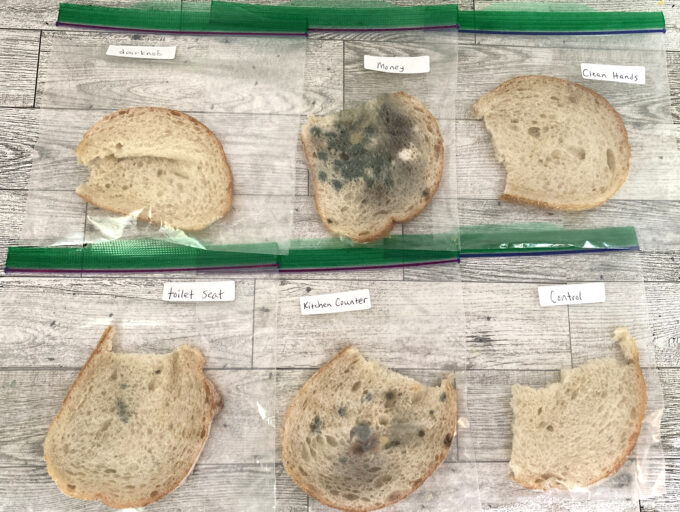
Make Blubber
How do whales, polar bears or even penguins stay warm? Make blubber and test out how it works as an insulator with this blubber experiment.
Bonus: Printable Biology Worksheets
Biomes
Learn about where different animals live and various biomes with these printable biomes of the world lapbook project.
Nitrogen Cycle
Discover the fascinating world of the nitrogen cycle and the important role micro-organisms have in this process.
Carbon Cycle
Kids can learn all about the Carbon Cycle and witness the exchange of carbon through various processes.
Animal and Plant Cells
Explore the parts of the animal cell or the plant cell with this simple STEAM project. Or grab the complete Animal and Plant Cells Project Pack here.
DNA
Learn all about the double helix structure of DNA with this printable DNA coloring worksheet! Color in the parts that make up DNA, as you explore our amazing genetic code.
Photosynthesis
Green plants make their own food, and food for us through the process of photosynthesis. Use these photosynthesis worksheets to introduce the steps of photosynthesis.
Food Chains
These printable food chain worksheets are a great way to learn about the flow of energy through simple food chains in ecosystems.
Why Do Leaves Change Color
Find out what causes leaves to change color in the fall with this fun Why Do Leaves Change Color lapbook project.
How to Set Up a Biology Project
Want to turn one of these fun biology activities into a science fair project? Then, you will want to check out these helpful resources.
Printable Science Projects For Kids
If you’re looking to grab all of our printable science projects in one convenient place plus exclusive worksheets and bonuses like a STEAM Project pack, our Science Project Pack is what you need! Over 300+ Pages!
- 90+ classic science activities with journal pages, supply lists, set up and process, and science information. NEW! Activity-specific observation pages!
- Best science practices posters and our original science method process folders for extra alternatives!
- Be a Collector activities pack introduces kids to the world of making collections through the eyes of a scientist. What will they collect first?
- Know the Words Science vocabulary pack includes flashcards, crosswords, and word searches that illuminate keywords in the experiments!
- My science journal writing prompts explore what it means to be a scientist!!
- Bonus STEAM Project Pack: Art meets science with doable projects!
- Bonus Quick Grab Packs for Biology, Earth Science, Chemistry, and Physics.


